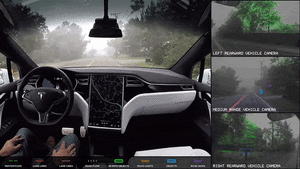Blog Information
- Posted By : UniqueThis
- Posted On : Jul 14, 2024
- Comments : 2
- Views : 263
- Category : Technology
- Description :
Overview
The advent of autonomous vehicles (AVs) promises to revolutionize urban mobility, reshaping our cities and the way we live and move within them. This blog explores the potential impacts of AVs on urban environments, from improved safety and efficiency to environmental benefits and challenges.
Improved Safety and Reduced Accidents
-
Reduction in Human Error:
- Accident Prevention: Human error accounts for approximately 94% of traffic accidents. Autonomous vehicles, equipped with advanced sensors and AI, can significantly reduce these errors, leading to fewer accidents and fatalities (Hindustan Times) .
- Real-Time Response: AVs can process vast amounts of data in real-time, enabling them to respond to road conditions and potential hazards more quickly than human drivers.
-
Enhanced Road Safety:
- Predictive Analytics: Autonomous systems use predictive analytics to anticipate and avoid potential accidents, improving overall road safety.
- Consistency: Unlike human drivers, AVs do not suffer from fatigue, distractions, or impaired driving, leading to more consistent and safer driving behaviors.
Increased Efficiency and Reduced Congestion
-
Optimized Traffic Flow:
- Smart Traffic Management: AVs can communicate with each other and with traffic management systems to optimize traffic flow, reducing congestion and travel times .
- Platooning: Groups of AVs can travel closely together in a formation known as platooning, which improves fuel efficiency and reduces traffic congestion by maintaining steady speeds and reducing the need for lane changes.
-
Efficient Use of Urban Space:
- Reduced Parking Demand: AVs can drop off passengers and then park themselves in less congested areas or return home, reducing the need for extensive urban parking spaces.
- Dynamic Rerouting: Autonomous vehicles can dynamically reroute based on real-time traffic data, avoiding congested areas and optimizing travel routes.
Environmental Benefits
-
Lower Emissions:
- Electric AVs: The majority of AVs are expected to be electric, contributing to lower greenhouse gas emissions and improved air quality in urban areas .
- Efficient Driving: AVs can optimize driving patterns for fuel efficiency, reducing overall energy consumption and emissions.
-
Reduction in Vehicle Numbers:
- Shared Mobility: The rise of autonomous ride-sharing services could lead to a decrease in the total number of vehicles on the road, further reducing emissions and traffic congestion .
- Urban Planning: Cities can redesign urban spaces to prioritize pedestrians and green areas over extensive road networks, promoting a more sustainable and pleasant living environment.
Challenges and Considerations
-
Technological and Infrastructure Development:
- 5G and Connectivity: The success of AVs relies heavily on robust 5G networks and connectivity infrastructure to support real-time data exchange and communication between vehicles and traffic systems .
- Cybersecurity: Ensuring the cybersecurity of AV systems is crucial to prevent hacking and malicious attacks that could compromise safety and reliability.
-
Regulatory and Ethical Issues:
- Legal Framework: Developing a comprehensive legal framework to regulate AVs, including liability in case of accidents, is essential for widespread adoption .
- Ethical Dilemmas: AVs will face ethical dilemmas in critical situations, such as deciding between the safety of passengers and pedestrians. Addressing these ethical concerns is a significant challenge.
-
Public Acceptance and Job Displacement:
- Trust and Acceptance: Building public trust in the safety and reliability of AVs is crucial for their acceptance and widespread use.
- Employment Impact: The transition to AVs may lead to job displacement in industries such as driving and logistics. Preparing for this shift through retraining programs and social support is essential.
Conclusion
The integration of autonomous vehicles into urban mobility systems holds immense potential to transform our cities, making them safer, more efficient, and environmentally friendly. However, realizing these benefits requires overcoming significant technological, regulatory, and social challenges. By addressing these issues and fostering collaboration between governments, industry, and communities, we can pave the way for a future where autonomous vehicles enhance the quality of urban life.
Sources:
-
